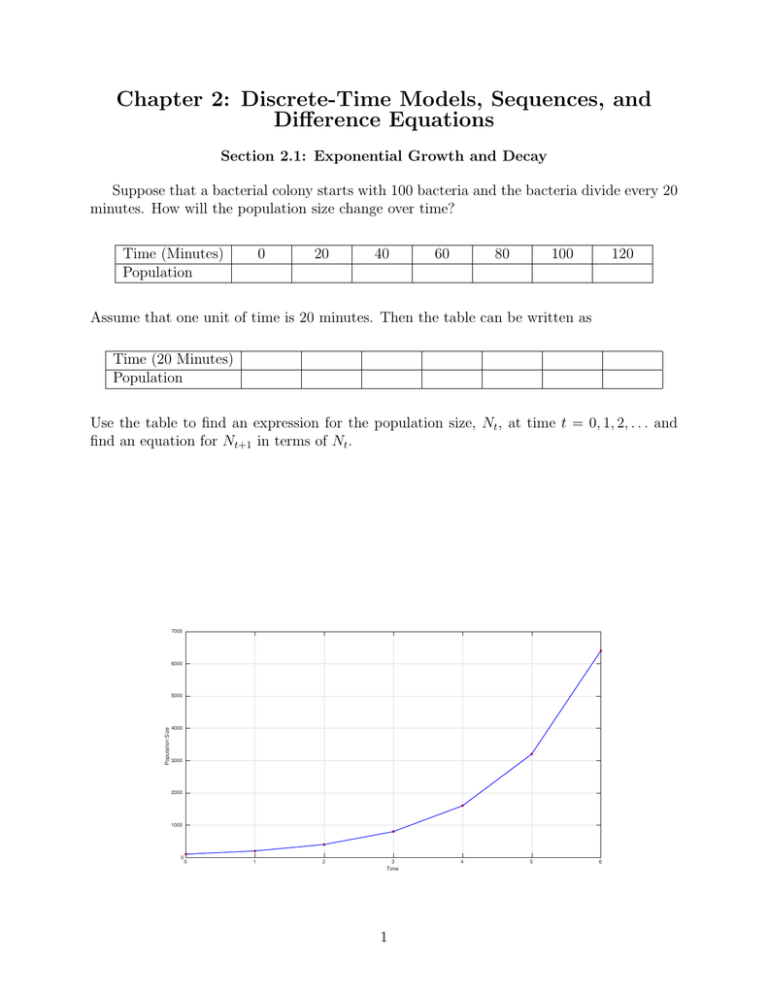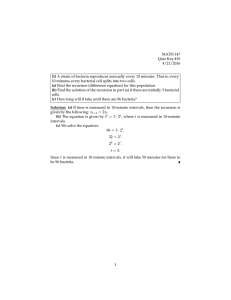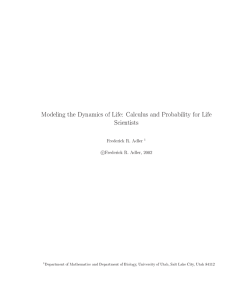Chapter 2: Discrete-Time Models, Sequences, and Difference Equations
advertisement

Chapter 2: Discrete-Time Models, Sequences, and Difference Equations Section 2.1: Exponential Growth and Decay Suppose that a bacterial colony starts with 100 bacteria and the bacteria divide every 20 minutes. How will the population size change over time? Time (Minutes) Population 0 20 40 60 80 100 120 Assume that one unit of time is 20 minutes. Then the table can be written as Time (20 Minutes) Population Use the table to find an expression for the population size, Nt , at time t = 0, 1, 2, . . . and find an equation for Nt+1 in terms of Nt . 7000 6000 Population Size 5000 4000 3000 2000 1000 0 0 1 2 3 Time 1 4 5 6 Definition: Suppose that a bacterial colony starts with N0 bacteria and each bacterium produces R bacteria per unit time, then the population size Nt satisfies the recursion or recursive equation Nt+1 = RNt . The solution of this recursive equation is Nt = N0 · Rt . If R > 1, then R is called the growth constant and if 0 < R < 1, then R is called the decay constant. Example: Suppose that a population begins with 62 individuals and quadruples every day. (a) Find the recursion for this population. (b) Find the solution of this recursion. (c) How long will it take for the population to reach 15,872 individuals? 2 Example: Suppose that a bacterial colony starts with 4 bacteria and triples every 30 minutes. (a) Find a formula for Nt if the unit of time is 30 minutes. (b) Find a formula for Nt if the unit of time is one hour. (c) Find a formula for Nt if the unit of time is 40 minutes. Example: Suppose that Nt = 50 · 2t , t = 0, 1, 2, . . ., and one unit of time corresponds to 2 hours. How long does it take the population to triple in size? 3 Example: A strain of bacteria doubles every 50 minutes. If initially there are 10 bacteria, how long will it take until there are 640 bacteria? 4





